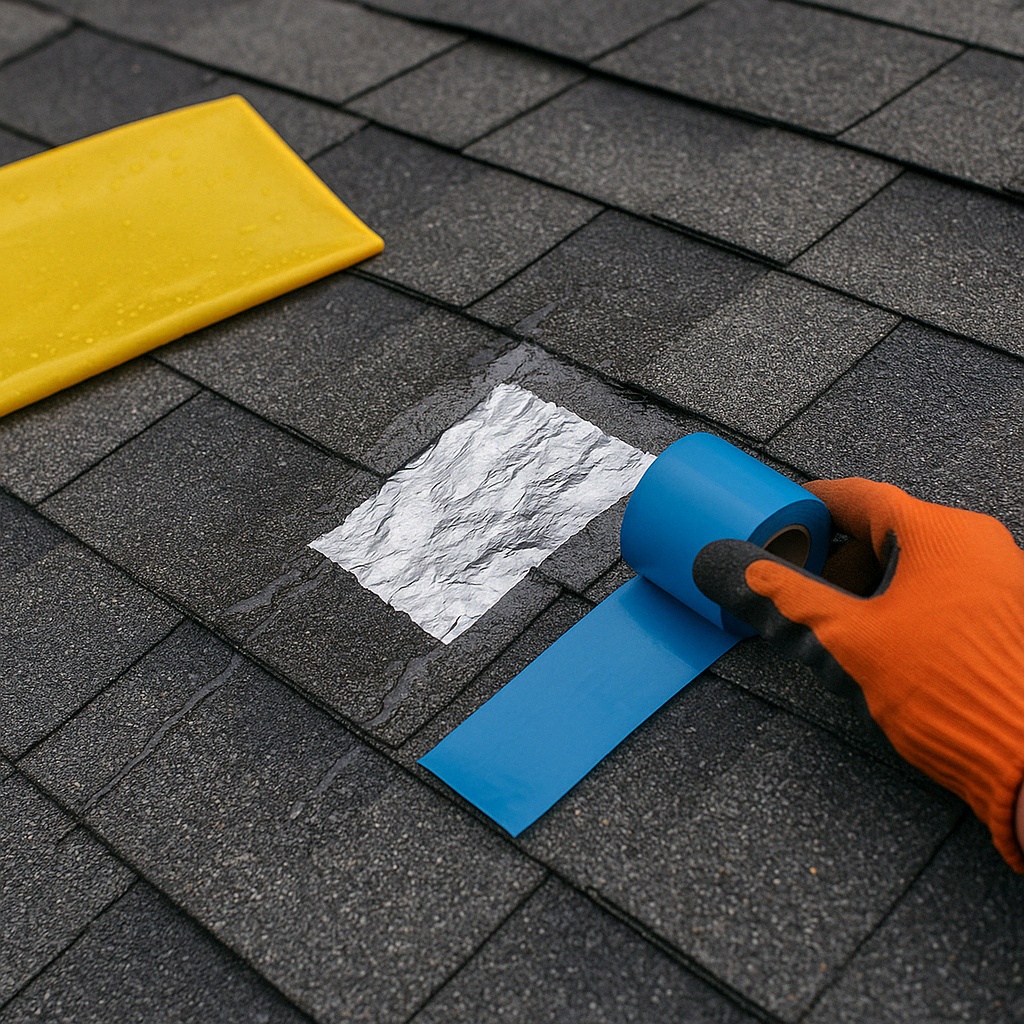
Temporary Roof Leak Repair: Quick Fixes to Prevent Water Damage
Reading Time : 2 Minutes
A roof leak never happens at a convenient time. One moment, everything’s fine then suddenly, you hear that dreaded drip, see water stains spreading on your ceiling, or worse, feel water puddling inside your home. If you’re dealing with an emergency roof leak, acting fast is the key to avoiding serious damage.
In this guide, we’ll break down how to handle a roof leak step by step, what you can do temporarily to stop the damage, and when it’s time to call a pro. Whether it’s caused by a heavy storm, old shingles, or just bad luck, we’ve got you covered.

Signs You Have a Roof Leak
- Water stains on ceilings or walls – Brownish, damp patches often indicate a slow leak.
- Dripping water or puddles inside – A major sign that water is getting through.
- Musty odors or mold growth – Leaks can create the perfect environment for mold.
- Peeling paint or sagging drywall – Excess moisture can cause interior damage over time.
If you notice any of these, it’s time to act fast!

Emergency Steps to Take Before Repairing
Before you grab your tools, follow these emergency steps to prevent further damage:
- Move valuables and furniture out of the way.
- Place buckets or containers under the leak to catch dripping water.
- Use towels or plastic sheets to protect your flooring.
- If safe, inspect your attic or crawl space to locate the leak’s source.
Once you’ve minimized immediate damage, it’s time to apply a temporary roof fix.

Quick & Easy Temporary Roof Leak Repair Methods
1. Using a Roof Tarp (Best for Storm Damage)
What You Need: A waterproof tarp, nails/screws, sandbags, or adhesive.
- Stretch a heavy-duty waterproof tarp over the leak area.
- Secure it in place with nails, screws, or heavy objects.
- Ensure the tarp extends several feet beyond the leak for full coverage.
This fix works great during storms but should be replaced with permanent repairs ASAP.
2. Roofing Sealant & Caulking (Best for Small Cracks)
What You Need: Roofing cement, silicone caulk, or sealant spray.
- Clean the leak area to remove dirt and debris.
- Apply roofing sealant or caulk directly to cracks and gaps.
- Let it dry completely before exposing it to rain.
Great for small leaks, but it won’t hold up against major roof damage.
3. Roofing Tape & Patches (Quickest Fix for Minor Leaks)
What You Need: Waterproof roofing tape or adhesive patches.
- Cut the tape to cover at least an inch beyond the leak’s edges.
- Press down firmly for a watertight seal.
- Use multiple layers for extra protection.
A fast and easy solution for shingle cracks or small holes.
4. DIY Rubberized Coatings for Flat Roofs
What You Need: Liquid rubber sealant or elastomeric coating.
- Apply a thick layer over the leak using a brush or roller.
- Let it cure fully before exposing it to rain.
- Works well on flat or metal roofs but isn’t ideal for shingles.

When to Call a Professional Roofer
Temporary fixes are just that temporary! Here’s when you should call a professional roofer:
- If the leak is worsening despite your efforts.
- If your roof has suffered storm or structural damage.
- If you see widespread water damage inside your home.
Ignoring a leak for too long can lead to costly structural repairs or even roof replacement.

Preventing Future Roof Leaks
Want to avoid emergency repairs? Follow these maintenance tips:
- Inspect your roof seasonally to catch small issues early.
- Keep gutters clean to prevent water buildup.
- Check for loose or missing shingles regularly.
- Ensure flashing and vents are sealed properly.
Preventative care can save you thousands in unexpected repairs!

Conclusion
Temporary roof leak repairs can save your home from immediate water damage, but they aren’t a long-term solution. The best thing you can do? Act fast, apply a quick fix, and call a professional roofer for a permanent repair.
Don’t wait until the damage worsens—protect your home and schedule an inspection today!


